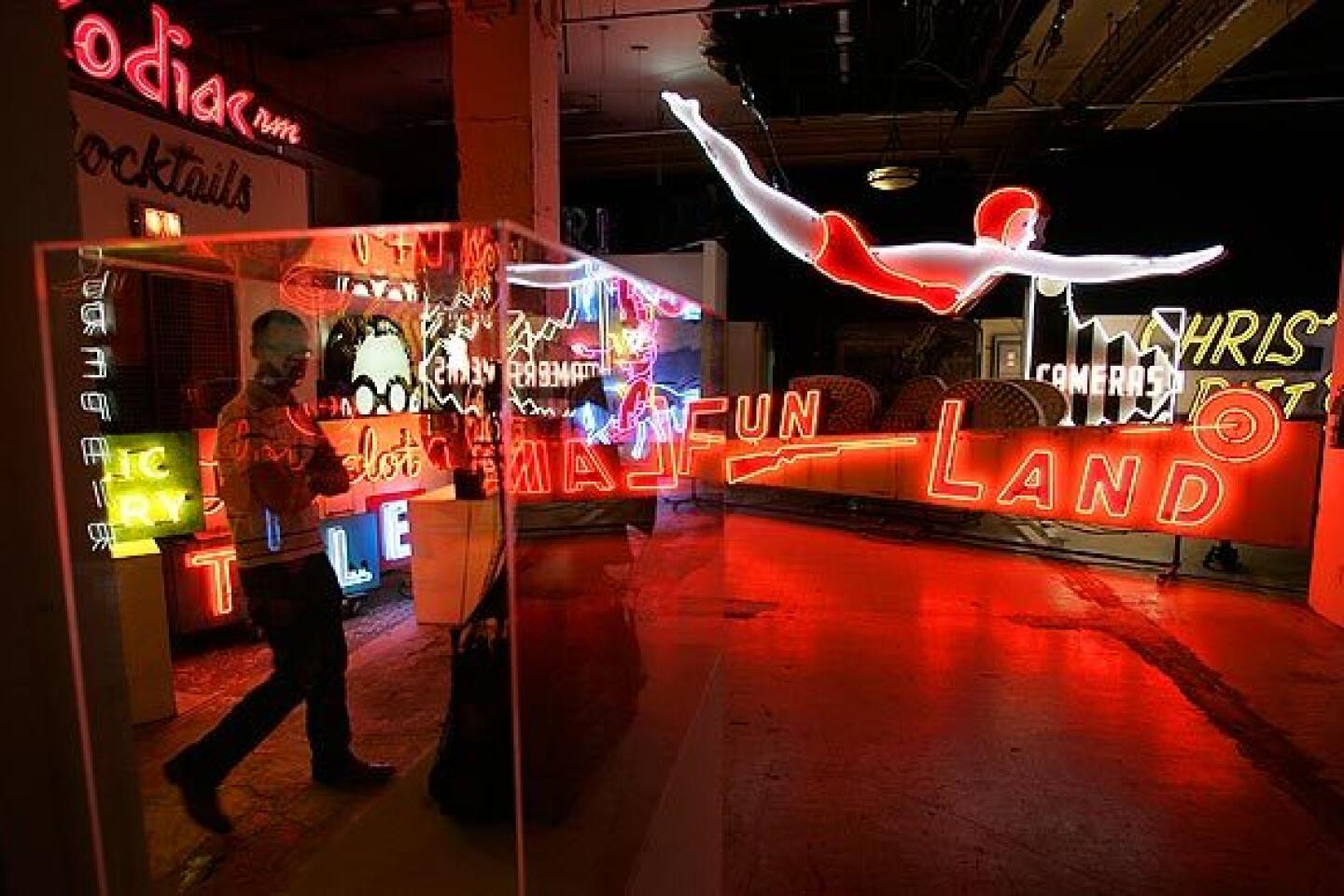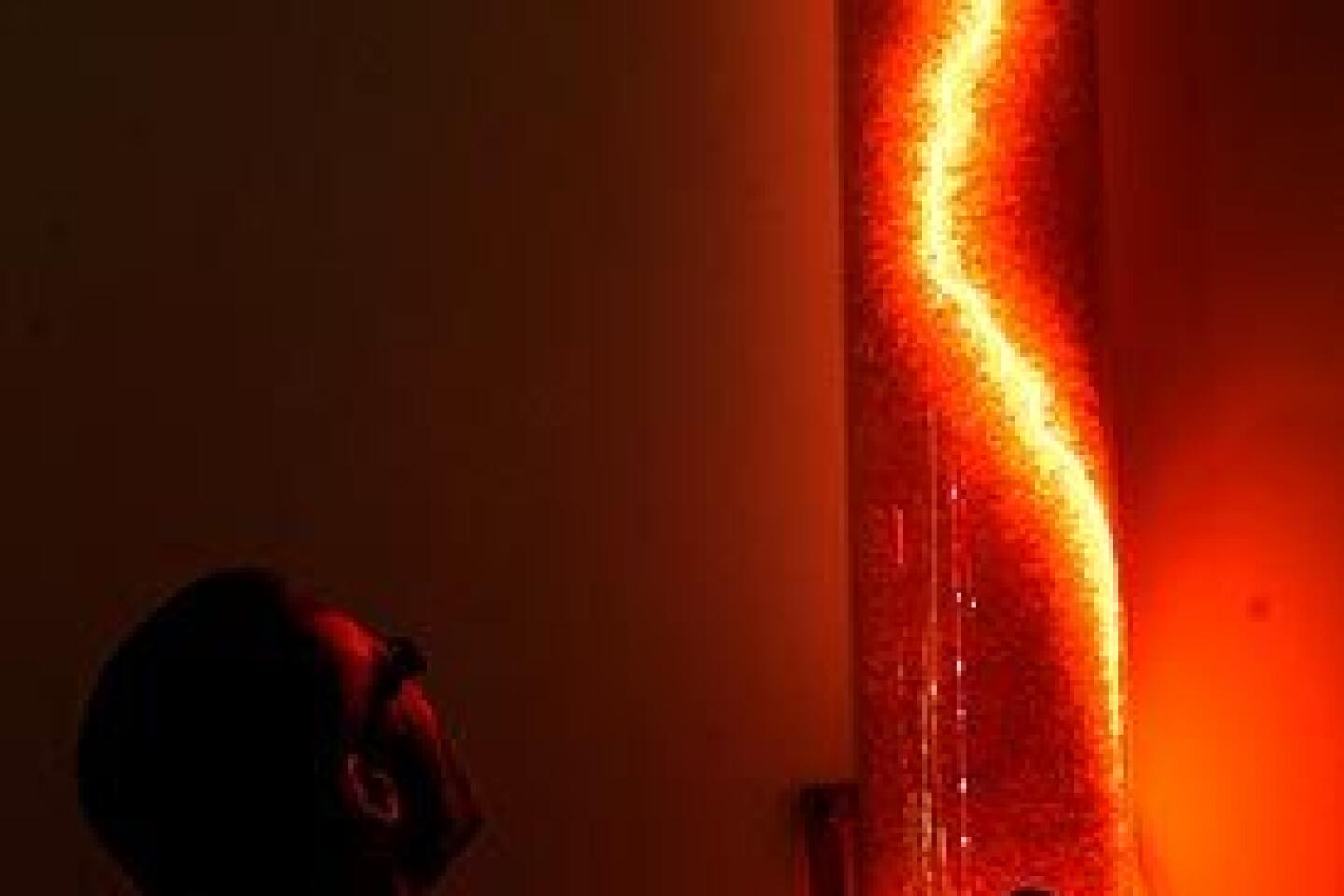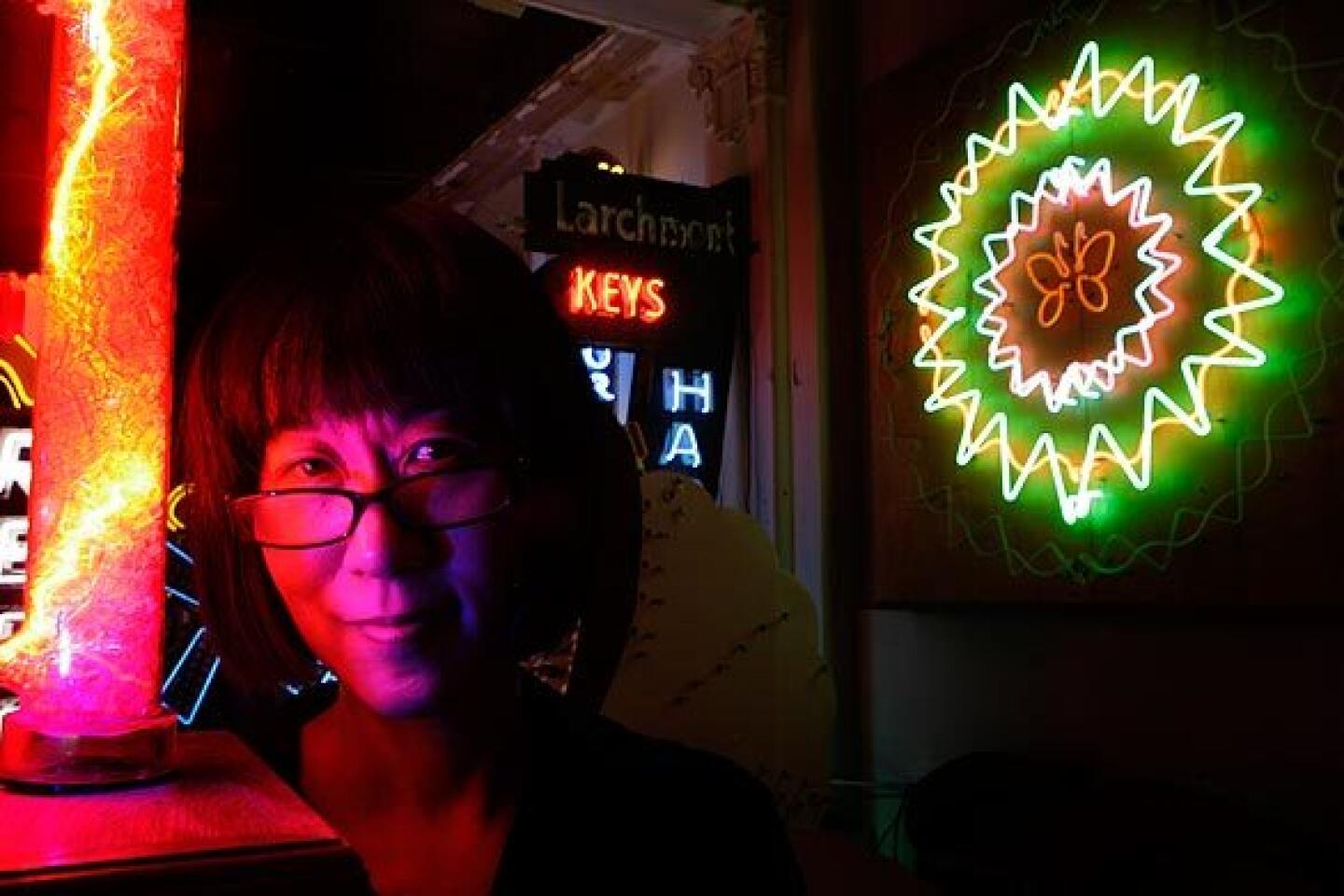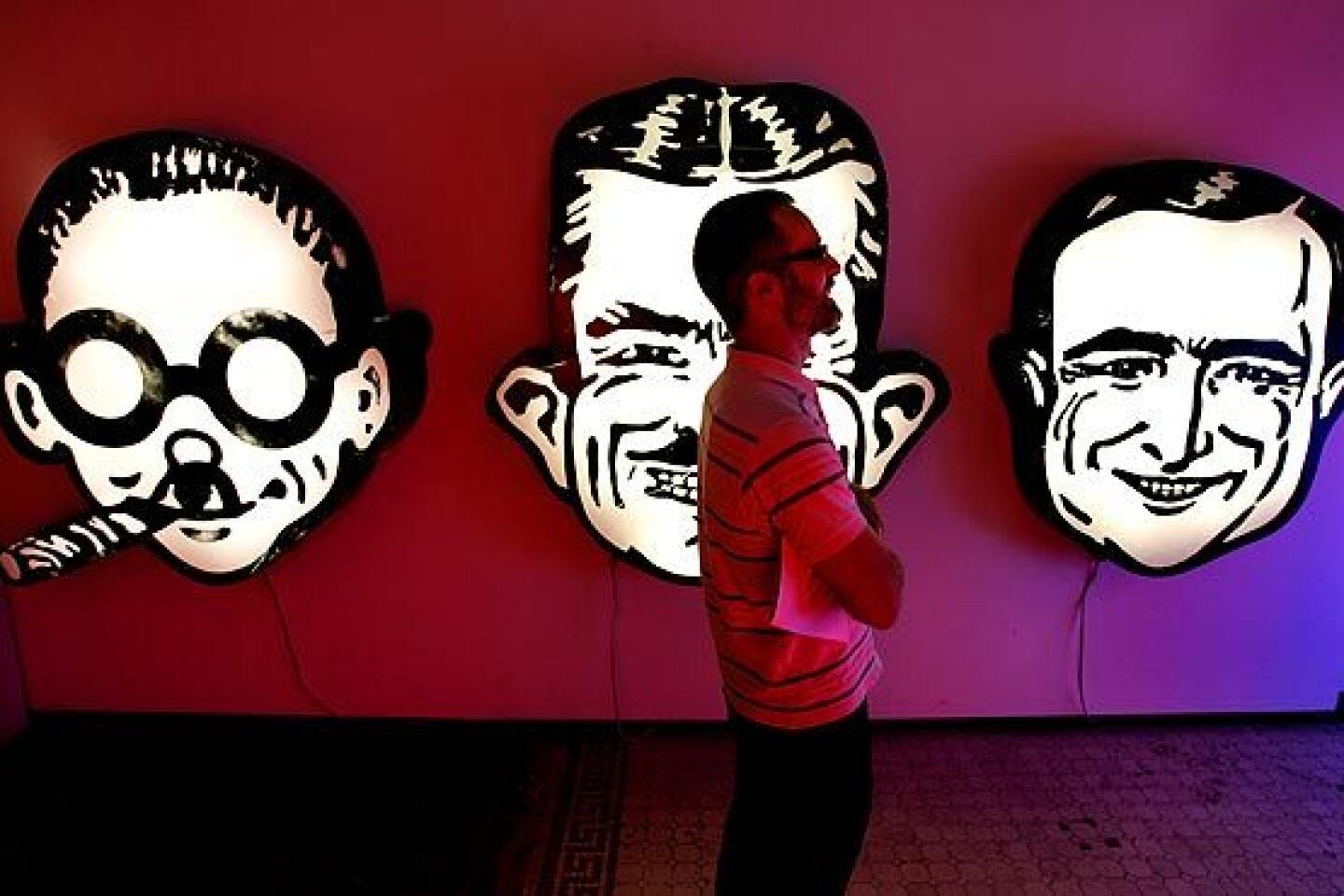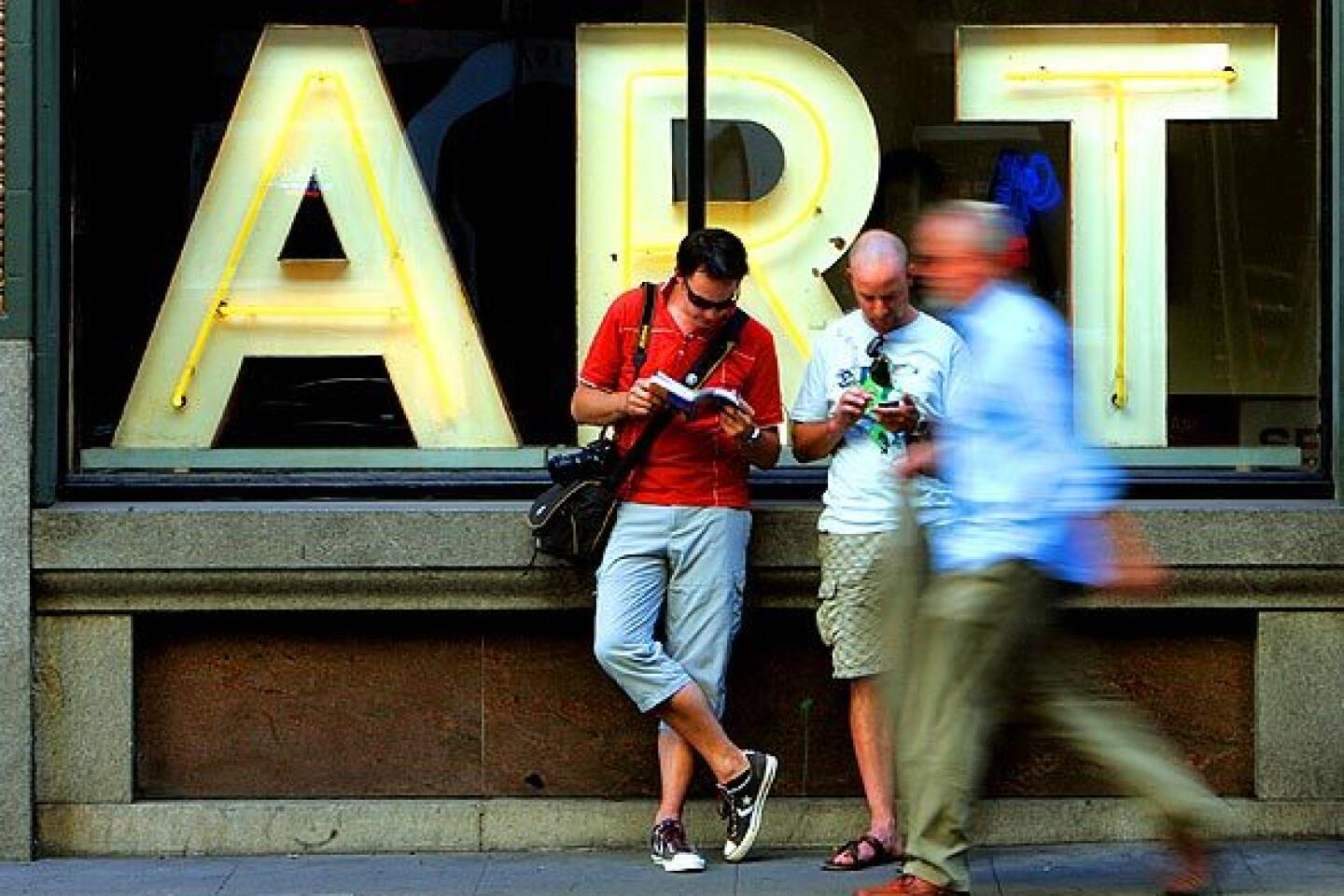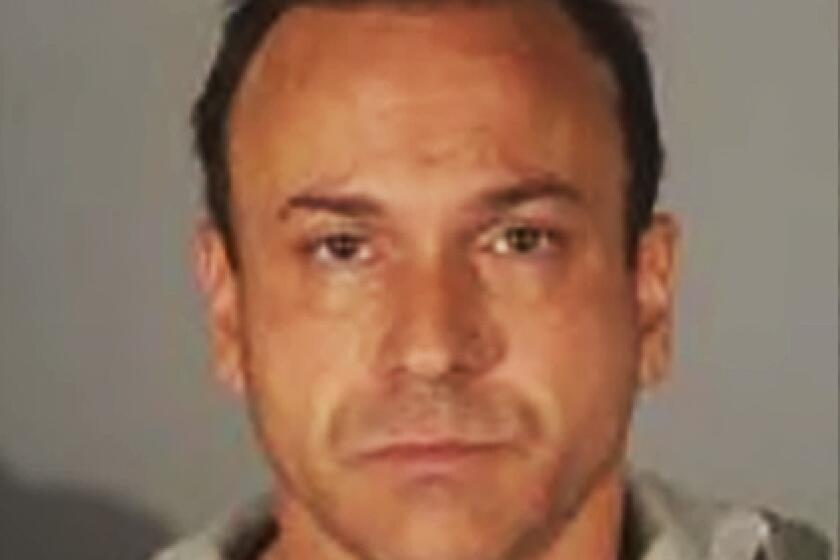L.A.’s Museum of Neon Art is glowing, glowing, gone
The Museum of Neon Art opened its doors in downtown Los Angeles in 1981 -- long before the city center was fashionable. For much of this time, the museum has moved around the area, looking for a spot large enough to show off its uniquely Southern California collection.
At its current location on 4th Street in the Old Bank district, visitors to the museum have a tendency to look befuddled after viewing the 20 pieces of neon and wonder where some of the more iconic pieces are located. The Grauman’s Chinese Theatre dragon? The old Union 76 ball?
“People ask, ‘Where’s the Brown Derby?’ ” said Kim Koga, the museum’s director, referring to the neon sign that once stood atop one of the city’s most famous dining establishments and is now in the museum’s permanent collection. “We couldn’t get it in the door here.”
Now, the museum has found the space it wants -- in Glendale. And many who live and work around the lofts and galleries that grew around the museum are sad to see it go.
The new space, on Brand Boulevard across from Americana at Brand, offers raw square footage as well as a chance to display some pieces on the building’s exterior -- all in an area that has been experiencing its own sort of renaissance. No date has been set for the move.
The museum leaves a part of downtown that in the last decade has been transformed from an area of empty office buildings and sagging storefronts to one of L.A.’s most vibrant gallery districts, where thousands converge for the monthly art walk.
“We have this amazing relationship that won’t end if they go to Glendale,” said Bert Green, founder of the Downtown Art Walk and owner of a gallery at 5th and Main streets, “but I would prefer that they stay in downtown.”
The announcement comes at a time when the downtown art scene is struggling, in some ways, with its own success. The Downtown Art Walk, which celebrated its fifth anniversary earlier this month, has grown to a point that some gallery owners and residents say has taken it away from its original purpose.
As many as 10,000 people now crowd downtown’s streets one Thursday a month, according to some estimates. Many come to peruse the galleries, but others come to visit the area’s bars, restaurants and many of the sidewalk vendors who also migrate to the area for the monthly event.
Green, who handed over the reins of the walk earlier this year, has moved his gallery’s opening parties to the day before the event, and closes the gallery at 6 p.m. on art walk nights. He was getting 2,500 visitors to the small gallery at 5th and Main between 7 and 9 p.m.
“It was costing me hundreds of dollars to stay open,” he said, mostly because of extra staff needed to manage the crowds, “and no one was buying anything.”
Downtown boosters say the recession has hit downtown less than other artistic neighborhoods such as Culver City or Venice. While one gallery, the nonprofit Pharmaka, recently lost its space at 5th and Main, others are opening on upper floors, which lack walk-in foot traffic but sometimes offer more space and cheaper rent.
Brady Westwater, a longtime downtown activist, said that he was sad to see the neon museum leave, especially because it had hung on for so long when downtown’s fortunes were on the decline. “We’ve now got Disney Hall, Gallery Row, Art Walk, SCI-Arc -- all of these things that have come in and are now institutions,” Westwater said. “It’s a tragedy that just as the theaters of Broadway are about to have their lights turned on again, the lights of the neon museum will be turned off downtown.”
More to Read
Sign up for Essential California
The most important California stories and recommendations in your inbox every morning.
You may occasionally receive promotional content from the Los Angeles Times.
